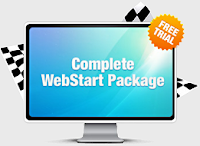Website optimization is not only about SEO alone. There are several
factors that needs consideration. Its always said that first impression is
the lasts long.
Google Search Visibility refers to the number of clicks or visits a site
receives based on its title, content, and keywords used for the subject
matter or campaign. Search Visibility allows you to get an overview of
how well your site is performing on the web.
Nowadays, with the availability of so many social marketing apps, gaining search visibility has become easier. If any user land on your website and it is not fast enough for a user in showing what he/she is looking for he/she will definitely leave and never visit that site again because there are several options available to him/her. Follow the points below while developing any application or website.
1. Set your goals. (Most crucial step.)
What is your website about? How can you educate your audience? Aim to get users beyond the homepage. Use measurable goals to track performance. Incorporate calls-to-action to show the next steps. Don’t let a user self-direct. Take them down the path that helps them make an informed decision.
2. Create content.
Homepage content is your business value proposition. Focus on one primary, long-tailed keyword. What words/phrases is your audience searching for to find your product or service? Use headlines and bullet points. Make your content easy to scan. Split content into columns – no more than 4.
Have whites paces, so you don’t overwhelm the visitor with content. Use internal links to help guide through the website. Add relevant, small images. With big images, layer them with text as a call-to-action. Overall, educate the visitor.
3. Optimize the page for Search Engines (SEO).
Make the page unique by using one main keyword that describes your business. Add the primary keyword to your: Page title
Meta description – a CTA (call-to-action), up to 150 characters. Headlines – H1, H2, H3 (only have one primary headline (H1))
Content – should be “above the fold” with bold and bullets
Images – file name and alt text (alt text describes the image to search engines and is used for screen readers for the visually impaired)
Anchor text links (the actual text that gets hyperlinked. Use a keyword instead of phrases like “click here.”)
4. Create an eye-catching header.
The simpler the better. Use your logo. Include your phone number. Add courtesy links in top right for quick navigation. Add a login link – if needed. Have a consistent header throughout the whole website.
5. Build the menu/navigation.
Make it big enough so that it can be seen from 5 feet away. Use a clear font for easy reading. Keep it consistent across the website. Have descriptive short menu headers. No more than 8 menu headers going across. 5 or 6 is an ideal number. Again, keep it simple and clear.
6. Include Calls-to-Action (CTA).
You have 3-5 seconds to engage the visitor – use CTAs to attract and engage.
Each CTA should appeal to a different visitor type. Not all need to go to landing pages. Some can point to blog posts, for example. Incorporate A/B testing – use 2 different CTAs and test them against each to see which receives more clicks. Look at your analytics to see which CTAs are the most effective.
You have 3-5 seconds to engage the visitor – use CTAs to attract and engage.
Each CTA should appeal to a different visitor type. Not all need to go to landing pages. Some can point to blog posts, for example. Incorporate A/B testing – use 2 different CTAs and test them against each to see which receives more clicks. Look at your analytics to see which CTAs are the most effective.
7. Incorporate social media.
Add a CTA to join your social networks – assuming you’re active in social media.
Add follow and share icons in header and footer. Be descriptive and show reason and value to join.
Add a CTA to join your social networks – assuming you’re active in social media.
Add follow and share icons in header and footer. Be descriptive and show reason and value to join.
8. Create a footer.
Include company legal name and copyright year. Add contact information and important links. Users often use the footer as an active site map. Keep it consistent throughout the website.
Include company legal name and copyright year. Add contact information and important links. Users often use the footer as an active site map. Keep it consistent throughout the website.
9. Continuously test your homepage.
Are you reaching your goals? Did the goals change? What can be added or adjusted?
Are you reaching your goals? Did the goals change? What can be added or adjusted?
10. Finally the last recommendation: Always look at the data and adjust. Highlight your successful homepage optimization. Also use the Google Analytics Website
Performance dashboard to benchmark your website data now, and check back
monthly to see how your optimizations are working for you.
Have a wonderful day.
Have a wonderful day.

